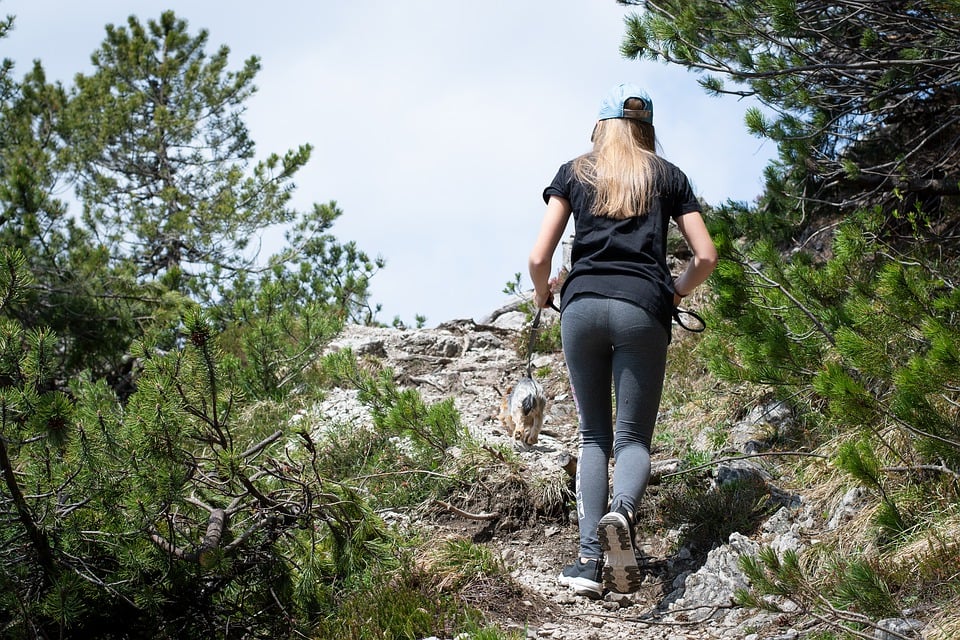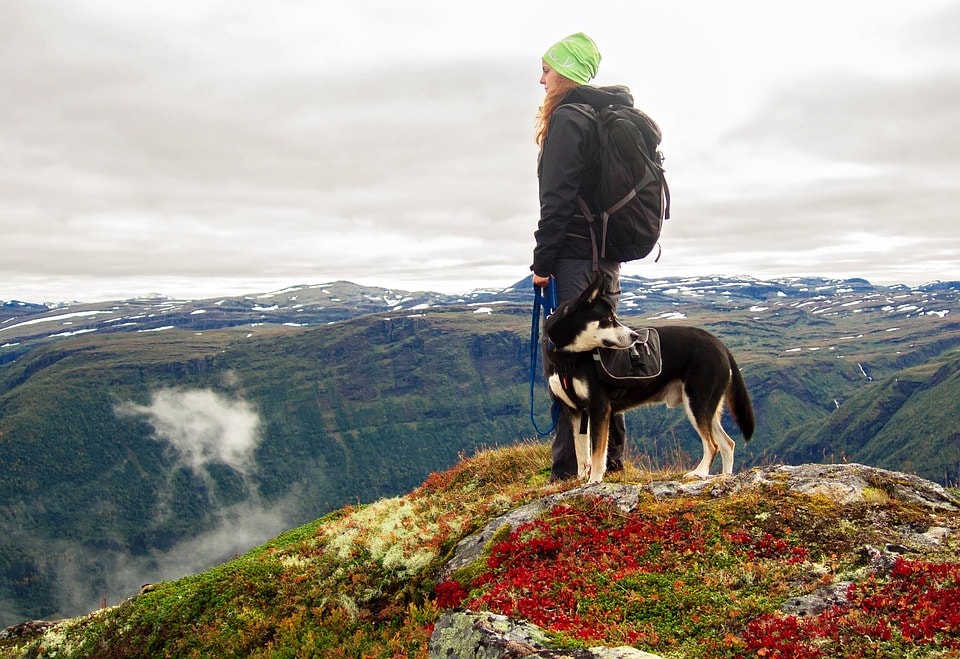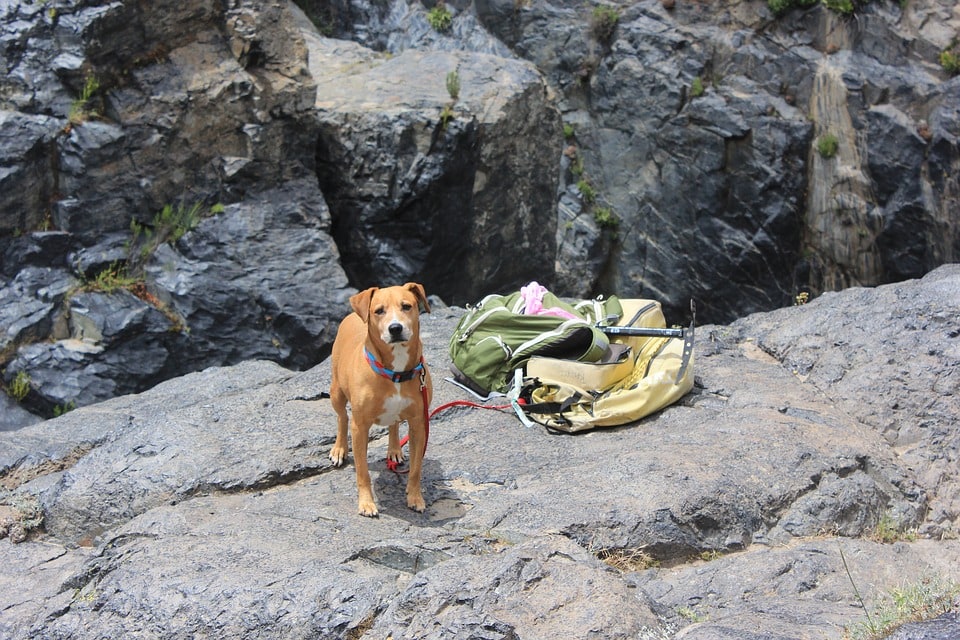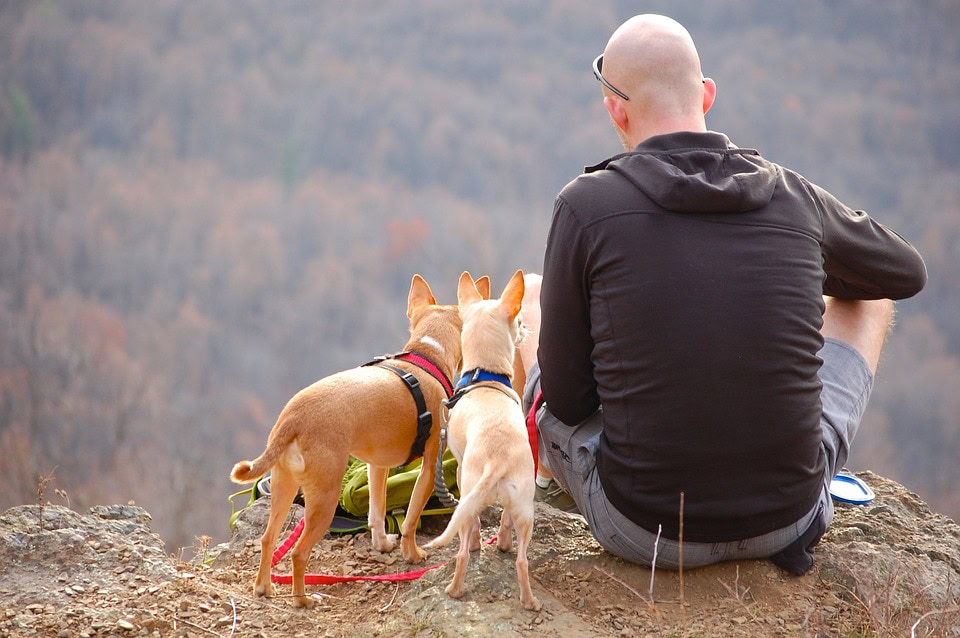VET APPROVED

The information is current and up-to-date in accordance with the latest veterinarian research.
Learn more »If you’re an avid hiker and dog lover, you know how great it is to hit the trails with your furry friend. Hiking is a great form of exercise both for you and your canine companion. It is truly a wonderful experience to take in the beautiful scenery and watch your pooch do the same!
Of course, you’ll want to make sure the experience is a safe one for your pooch, especially if they are new to trail hiking. There are other hikers, dogs, and wild animals to be aware of, among other things, and there are definitely precautions to take before hitting the trails with your four-legged friend.
In this article, we look at a few important safety tips to consider before taking your pooch out onto the trail, to ensure that they are as safe as possible. Let’s dive in!

The 9 Tips on How to Safely Hike, Backpack, or Camp With Your Dog
1. Make sure the trail is dog-friendly
The first thing to make sure of is whether the trail you plan on hiking allows dogs. This is important because if the trail is not designated as dog-friendly, there is usually a good reason! This could be because of dangerous wild animals, like bears, snakes, or wolves; steep rocky terrain; or treacherous cliffs that they could potentially fall from. Make sure the trail is manageable for your pooch before setting out, especially keeping in mind their age, breed, fitness level, and health.

2. Make sure you have the necessary gear
You’ll need to make sure you have everything that you need not only for yourself but also for your pooch. Weather out on the trail can change quickly, and it’s a good idea to bring a warm, waterproof coat for your dog in case of rain and cold. Extra water and snacks for your pooch are also essential, as you may not find any water. Physical exertion on a warm day can swiftly cause dehydration and heat stroke, so pack more than enough water if there is none on the trail. It’s best to avoid hiking in hot weather altogether.
3. Use a leash!
This goes without saying, but the best way to keep your dog safe in new, unfamiliar territory is to keep them on a leash at all times. The last thing that you want is for them to run off into potentially dangerous areas in pursuit of a scent, something that even the most well-trained dogs sometimes find hard to resist. Also, there may be other hikers with dogs on the trail, and you don’t want a dog fight on your hands. Make sure your dog has a microchip, a collar with your phone number and details, or even a GPS tracker, in case they get lost.

4. Use tick and flea protection
Along with having all their vaccinations up to date, you should make sure your dog has had their regular tick and flea treatment at least 48-72 hours before your hike. Hot, humid weather is the ideal environment for ticks, and any spots with long grass could leave your pooch riddled with the pests. Tick bite fever is a serious disease that can cause health complications in dogs not treated early.
5. Take regular breaks
Even the most energetic pooch needs regular rest. The new scents, sights, and sounds can cause your dog to be overly excited, and they can easily get overheated without realizing it. Take regular breaks every half hour or so, and offer them water regularly to ensure that they are hydrated and pacing themselves properly. Aim for hikes early in the morning to avoid the hottest part of the day.

6. Bring a first aid kit
This is an essential item when hitting the trails with your dog, and although you’ll rarely need it, you’ll be happy to have it when you do. There are all sorts of hazards on the trail, all of which may require quick first aid. Tweezers for pulling out thorns or pulling off ticks, antiseptic spray for cuts and wounds, bandages to cover up injuries, and even eye drops for eye injuries are all hugely helpful items to have around.
7. Bring a poop scoop!
Hiking etiquette is there for a reason: to make the experience a pleasure for all involved. It’s a good idea to bring a small “poop scoop” or spade and a poop bag to clean up after your dog, and many trails have strict clean-up policies. The last thing that you’d want when hiking is stepping in another dog’s mess, and you should aim to leave the trail the same way that you found it.

8. Make sure your dog is fit enough
Depending on the age and size of your dog and the difficulty of the trail, you should research the trail to make sure your dog is fit enough to handle it. Small dogs can have a tough time in long grass and rocky terrain. Also, keep your dog well-exercised long before you attempt any trails, to make sure you don’t push them too hard. This is especially important for young dogs and senior dogs; they can tire out quickly. Dogs with underlying health issues such as heart disease, respiratory issues, diabetes, and injuries should avoid hiking.
Brachycephalic breeds will struggle more during the hike due to their obstructive airway syndrome, making breathing more challenging, especially when exercising or in warm weather. They should avoid hiking in most cases and better enjoy other types of gentle outdoor activities more suited to their needs. Young puppies should not be taken on hikes, as this may put too much pressure on their developing joints, and the age when they can safely start hiking will depend on their breed and size.
9. Do a post-hike checkup
It’s a good idea to perform a thorough checkup on your pooch after getting back from the trail. Your dog is running through terrain that may be knee-high for you at most and is constantly sweeping past grass and bushes. Check them for any ticks, as well as cuts, scrapes, and injuries.

Final Thoughts
Nothing beats getting to explore the outside world with your dog. However, there are several things you want to remember besides just packing a leash. We hope this article highlighted some important tips to put into action before you hit the trails. Happy hiking!
You may also want to read:
Featured Image Credit: dezy, Shutterstock
Contents
- The 9 Tips on How to Safely Hike, Backpack, or Camp With Your Dog
- 1. Make sure the trail is dog-friendly
- 2. Make sure you have the necessary gear
- 3. Use a leash!
- 4. Use tick and flea protection
- 5. Take regular breaks
- 6. Bring a first aid kit
- 7. Bring a poop scoop!
- 8. Make sure your dog is fit enough
- 9. Do a post-hike checkup
- Final Thoughts











